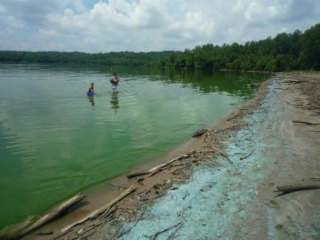Ecology of Harmful Algal Blooms

EPA researchers are developing predictive models to relate nutrient loads, land use, land cover, socioeconomic factors, and climate to the frequency, location, and severity of cyanobacterial blooms in lakes of the United States. Improving scientific approaches will help decision makers, watershed managers, and community leaders make informed decisions.
Predictive Models for Water Quality and Indices of Cyanobacteria
EPA's computational ecologists have used machine learning methods to predict chlorophyll a concentrations in lakes. These methods rely on large data sets, emphasize open science practices, and are well suited to extract information about the potential drivers of water quality. Because chlorophyll a is the type of chlorophyll found in cyanobacteria, it is widely used as a measure of cyanobacteria concentrations to determine water quality.
